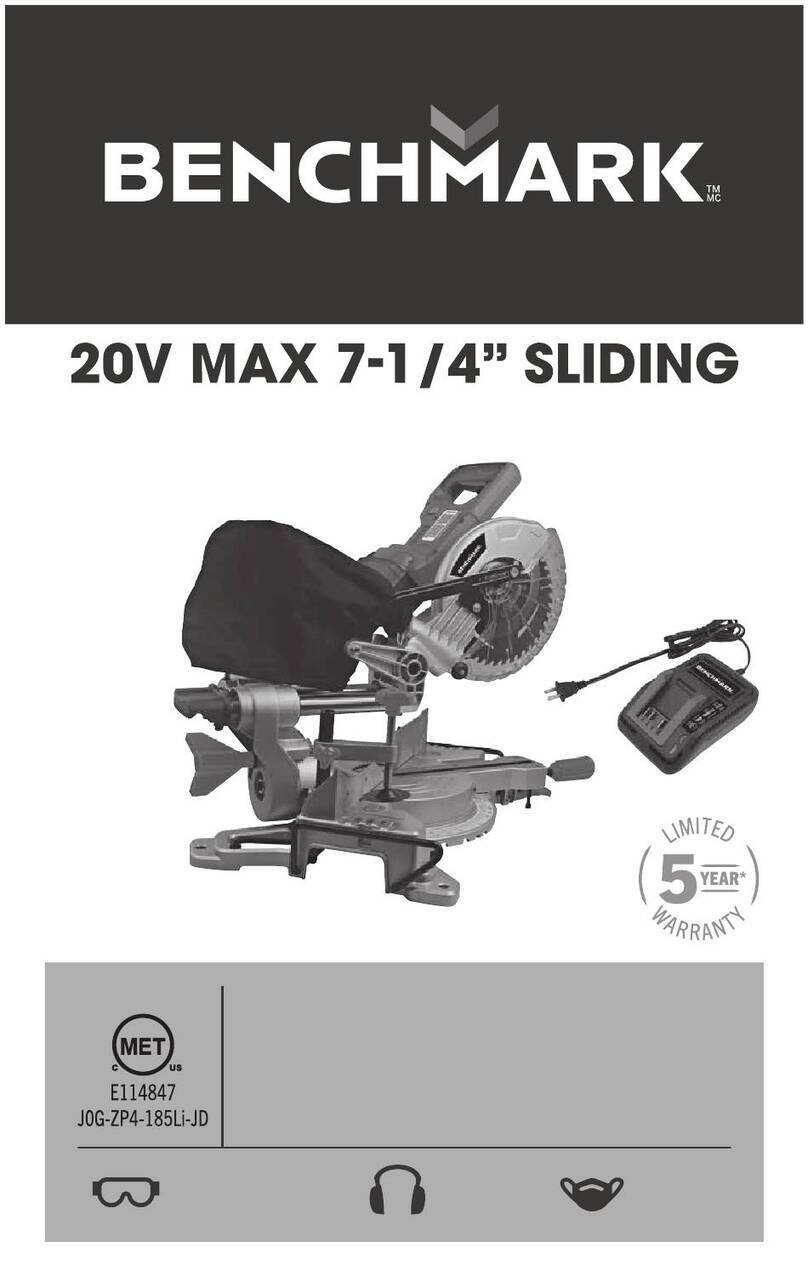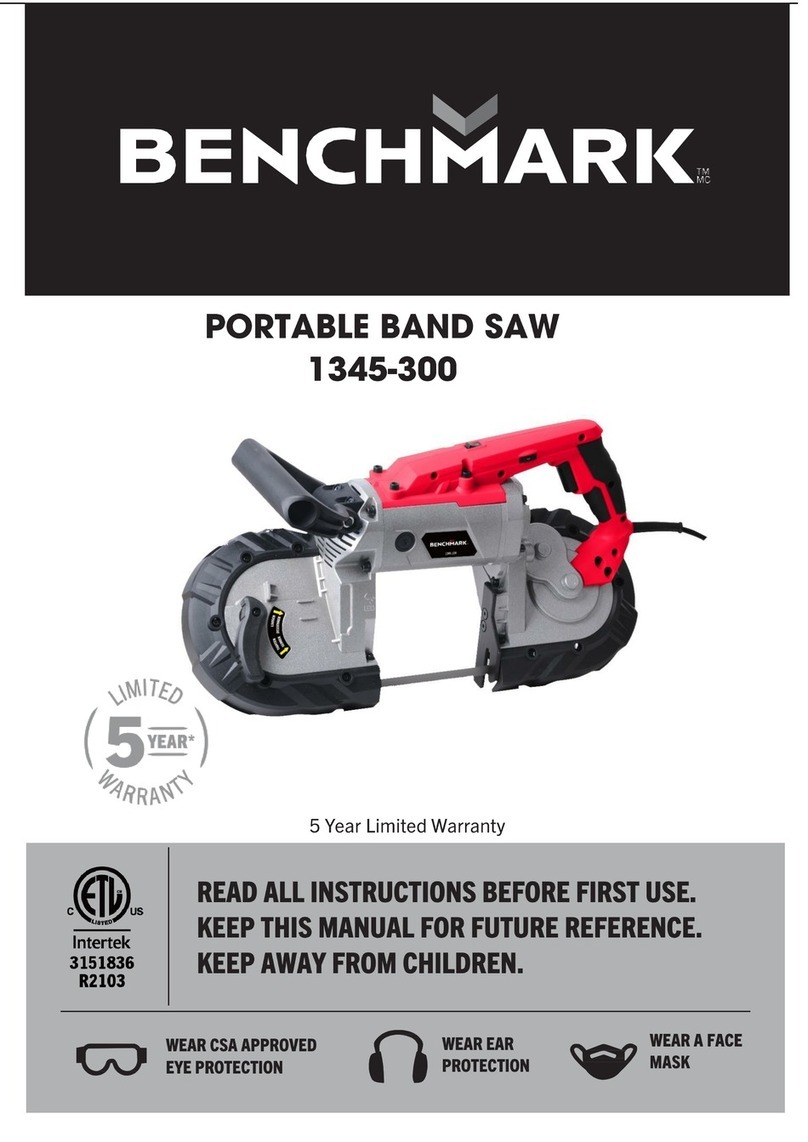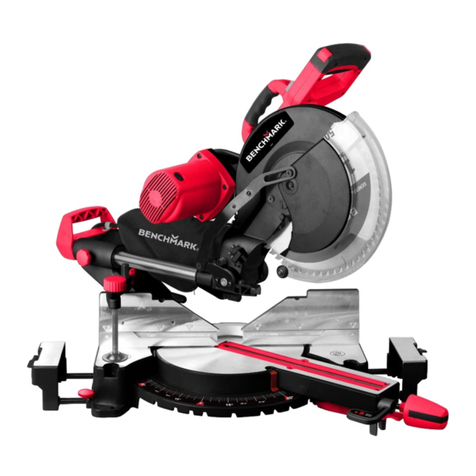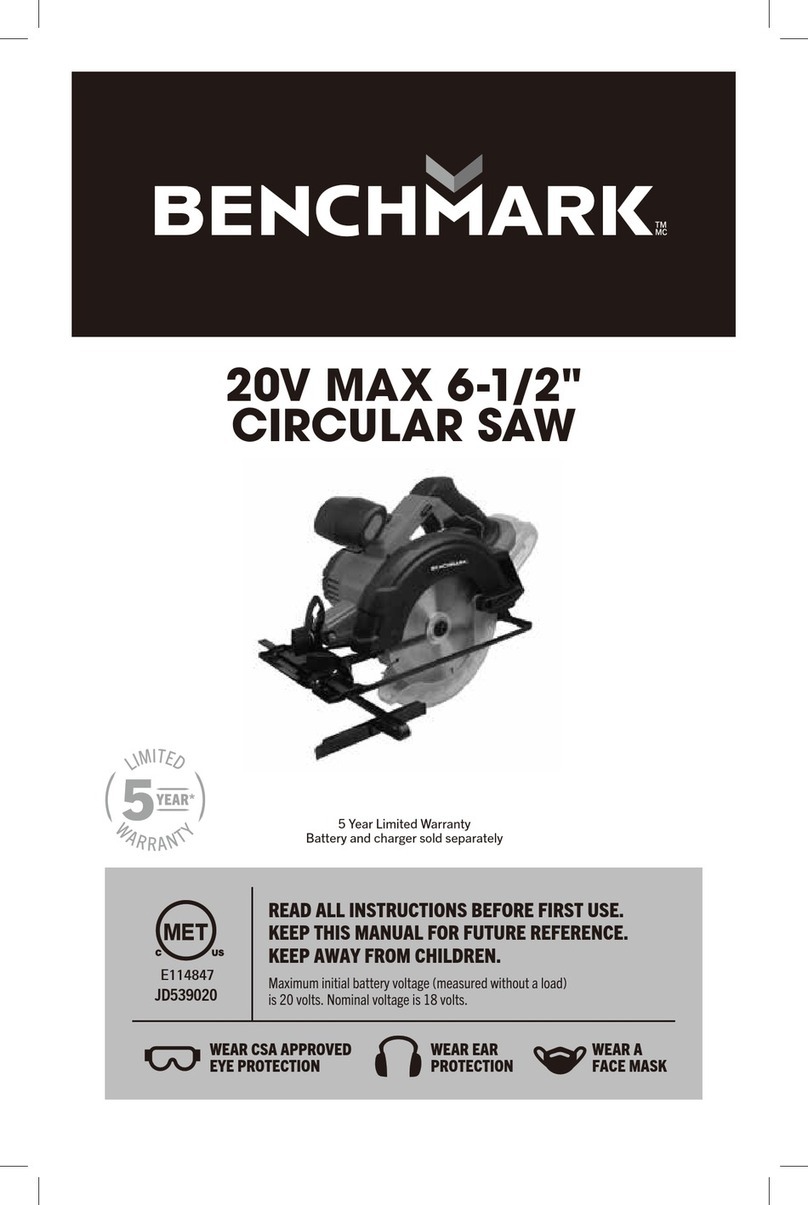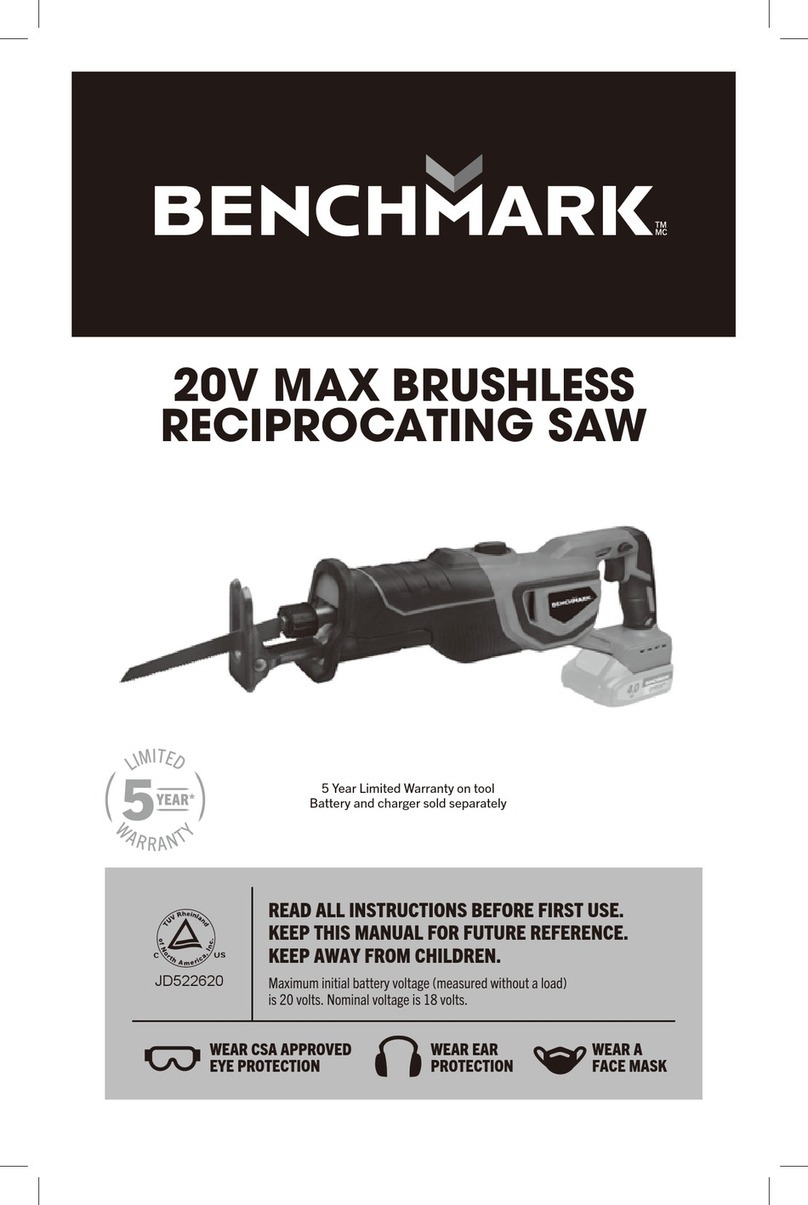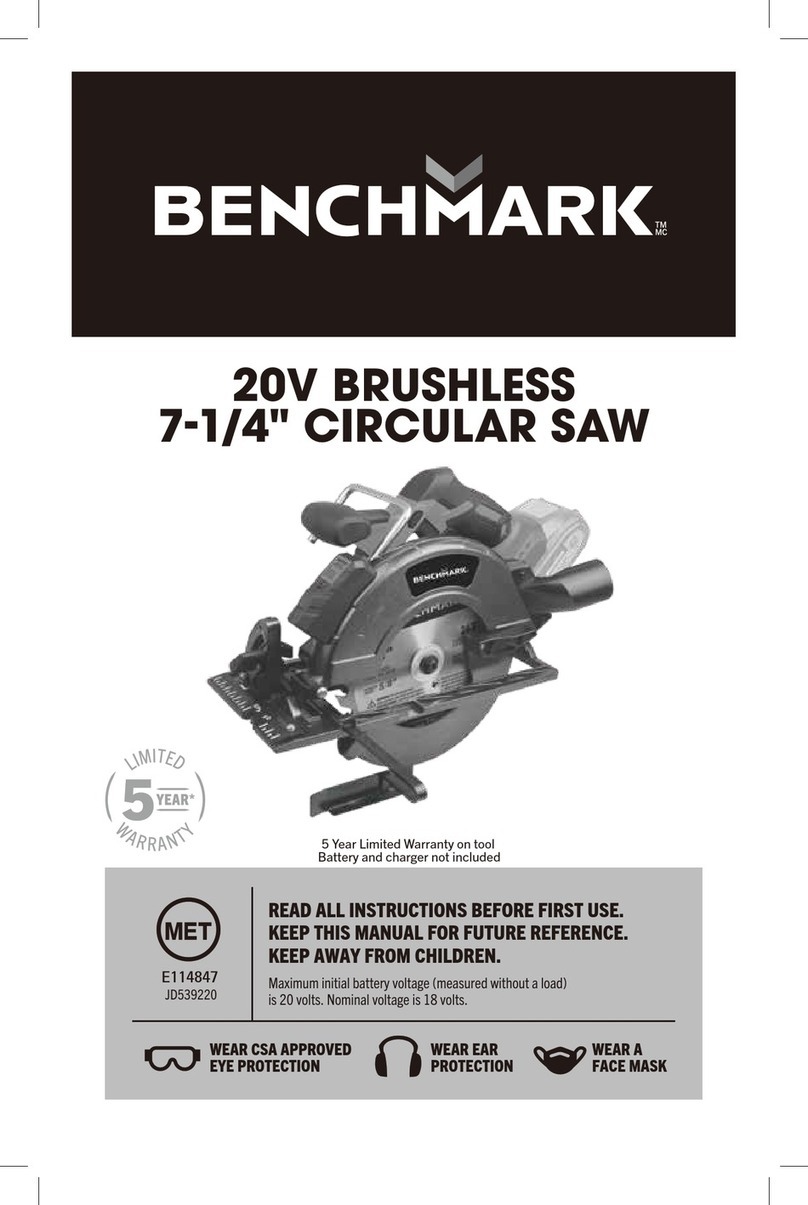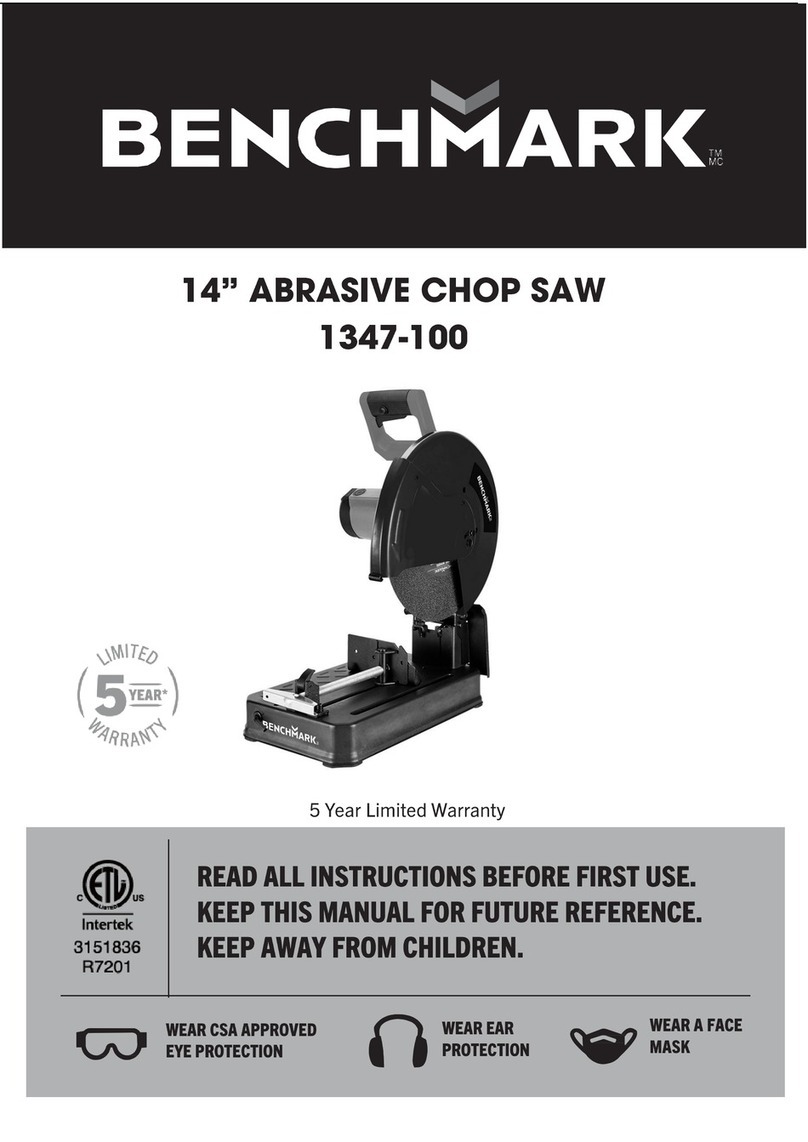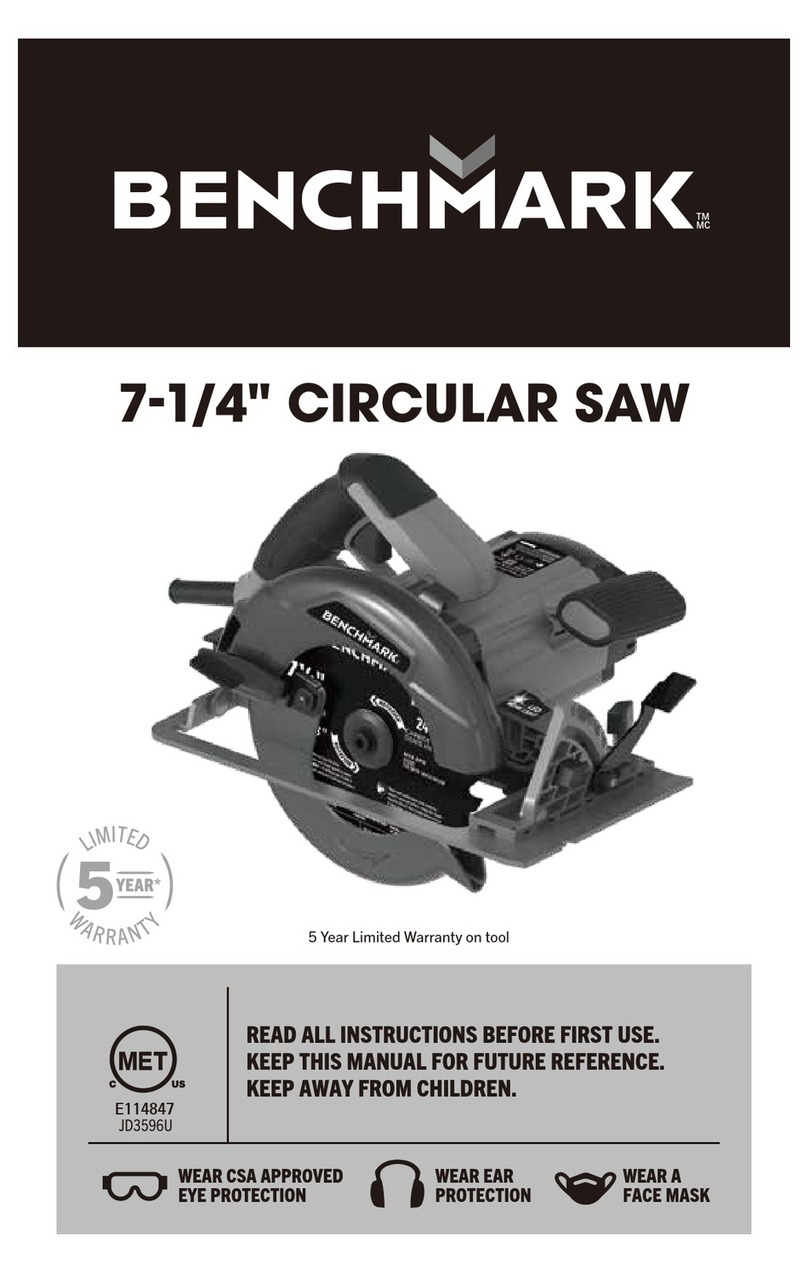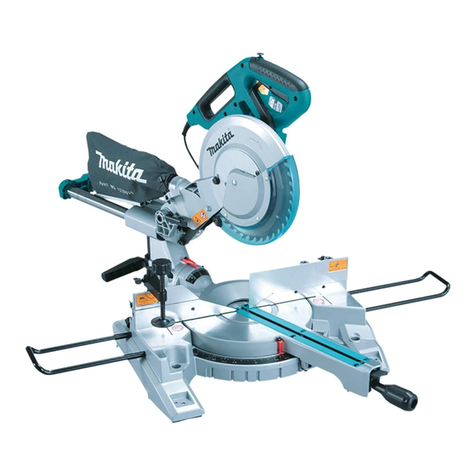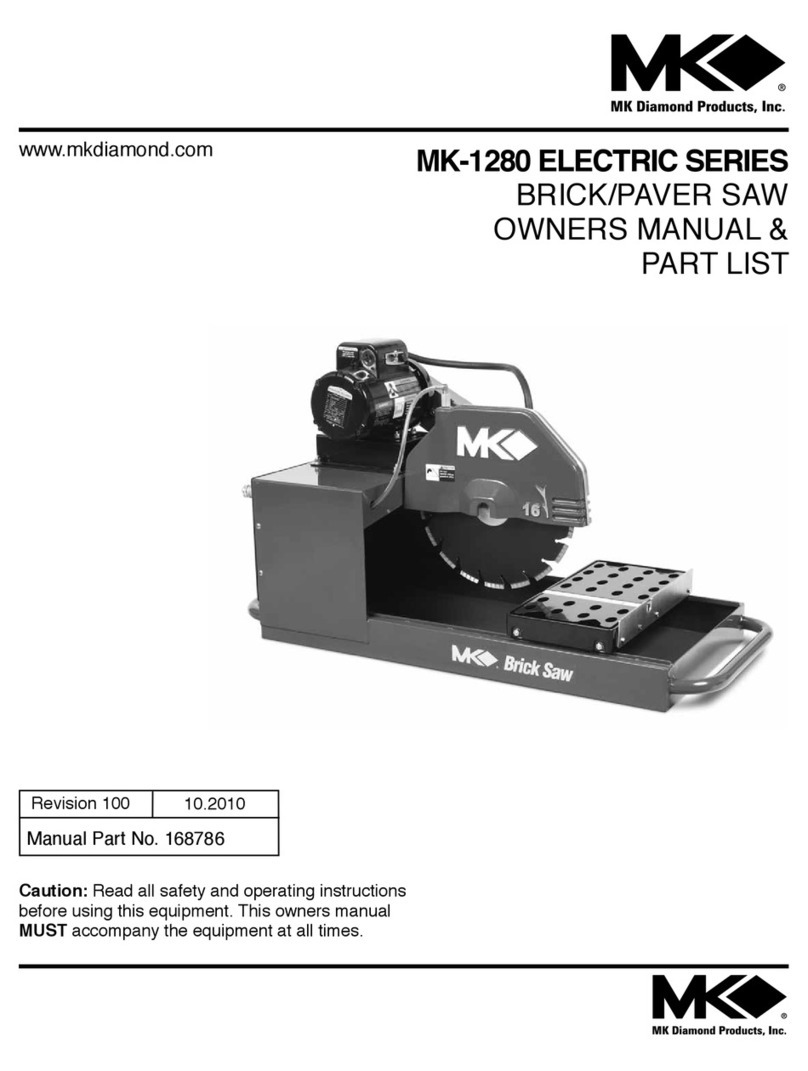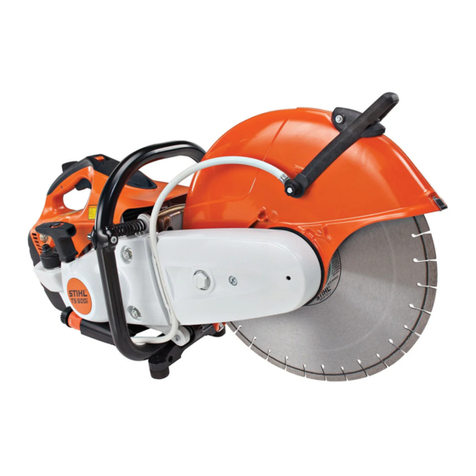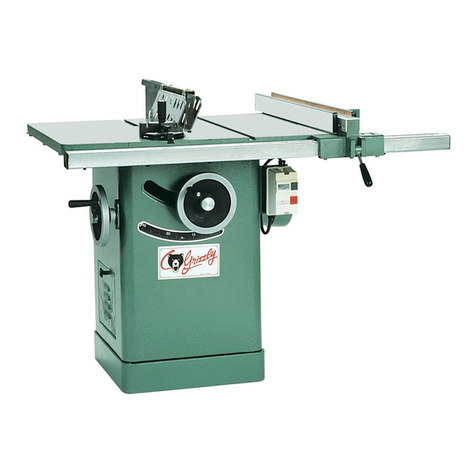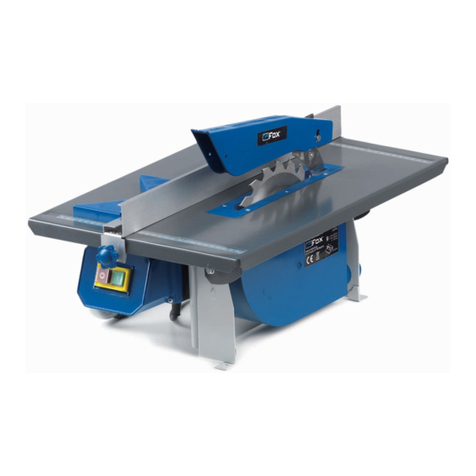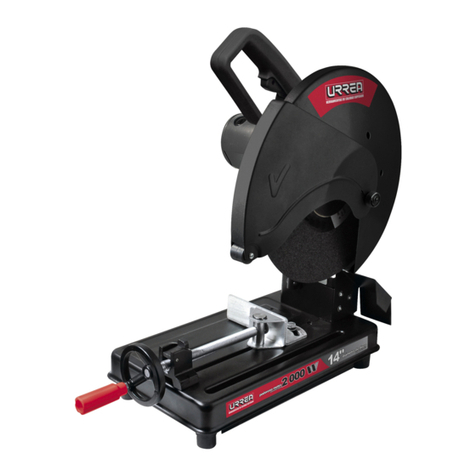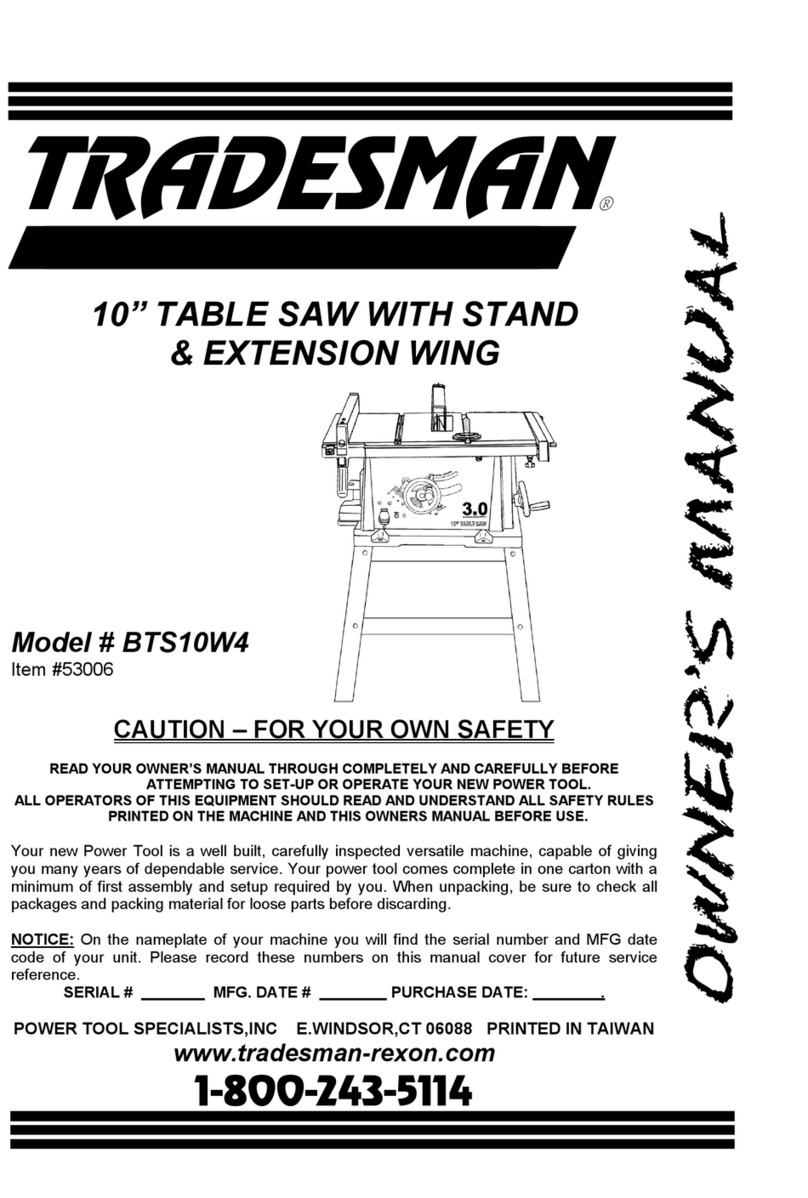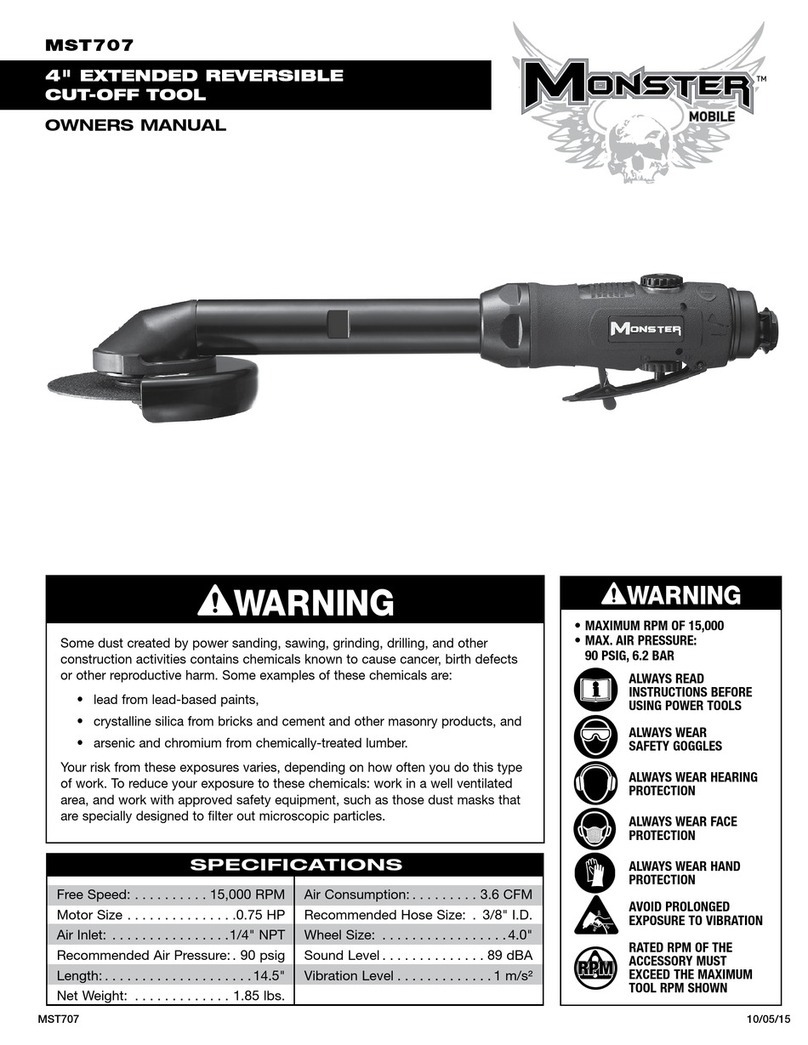
3
GENERAL SAFETY WARNINGS
WARNING:
Before using this tool or any of its accessories, read this manual and follow all
Safety Rules and Operating Instructions. The important precautions, safeguards
and instructions appearing in this manual are not meant to cover all possible
situations. It must be understood that common sense and caution are factors
which cannot be built into the product.
SYMBOL MEANING
ALWAYS WEAR EYE PROTECTION THAT CONFORMS WITH CSA
Z94.3 or ANSI SAFETY STANDARD Z87.1
FLYING DEBRIS can cause permanent eye damage. Prescription
eyeglasses ARE NOT a replacement for proper eye protection.
Non-compliant eyewear can cause serious injury if broken during
the operation of a power tool.
Use hearing protection, particularly during extended periods
of operation of the tool, or if the operation is noisy.
WEAR A DUST MASK THAT IS DESIGNED TO BE USED WHEN
OPERATING A POWER TOOL IN A DUSTY ENVIRONMENT.
Dust that is created by power sanding, sawing, grinding,drilling, and
other construction activities may contain chemicals that are known
to cause cancer, birth defects, or other genetic abnormalities.
These chemicals include:
• Lead from lead-based paints
• Crystalline silica from bricks, cement, and other masonry products
• Arsenic and chromium from chemically treated lumber.
The level of risk from exposure to these chemicals varies, according
to how often this type of work is performed. In order to reduce
exposure to these chemicals, work in a well-ventilated area, and use
approved safety equipment, such as a dust mask that is specifically
designed to filter out microscopic particles.
To avoid electrical hazards, fire hazards or damage to the tool,
use proper circuit protection.
This tool is wired at the factory for 120 Volts AC operation. It must be
connected to a 120 Volts AC, 15 Amps circuit that is protected by a
time-delayed fuse or circuit breaker. To avoid shock or fire, replace
power cord immediately if it is worn, cut or damaged in any way.
Ventilation openings in batteries and chargers must always be open
to allow cooling air to circulate freely. Air vents that are blocked,
restricted or covered may result in the battery or charger overheating.
Overheating may lead to damage to the tool or cause a fire, resulting
in possible serious injury.




















